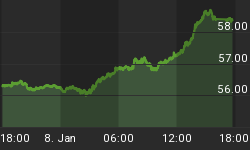The dollar received a triple shot of life from an unexpectedly strong Chicago PMI survey, an announcement from Washington stating a conditional willingness to open dialogue with Iran and a hawkish release of the May 10 FOMC minutes indicating the Fed's preoccupation with a falling dollar.
The May 10 minutes confirm our pre-May 10 FOMC assessment indicating the Fed's preoccupation with the inflationary repercussions of the falling dollar. The minutes indicated: "The recent decline in the dollar was another factor that could add to inflation pressures, although the effect of prior changes in the ... dollar on core consumer prices had apparently been limited" and that: "Increased focus in public debate on the risks posed by the large U.S. external imbalance appeared to erode investor support for the dollar".
The minutes contained a more explicit commitment by the Fed to battle emerging inflationary pressures stemming from rising energy prices, labor shortages and a falling dollar. But the record also shed more ink on the "cooling of housing markets" to the extent that the FOMC made the unusual step of addressing the housing slowdown in the FOMC statement.
We noted on the morning of the May FOMC announcement that the Fed ["would sound off a relatively hawkish tone by not explicitly mentioning a conditional pause and ... keep the phrase: "some further policy firming may be needed" in order to slow the pace of the dollar decline". Our reasoning was founded on the premise that the dollar has fallen sufficiently rapidly to the extent of triggering inflationary pressures and the extent of fuelling disorderly declines in the event that it sounded a dovish tone"]. We reiterate our assessment with the Fed's increased importance vis-à-vis the value of the dollar and maintain our inclination towards a 25-bp rate hike in June.
Of the major factors that would cause us to revise this forecast are a retreat in the May core CPI (to no higher than 0.2%) and core PCE price index (to no higher than 2.0% y/y) as well as another 4-5% decline in the S&P 500, which would add total losses to 10% from the year's 1326 high. And as long as Friday's payrolls release shows a figure of more than 100K-120K in May, the Fed will deliver the necessary tightening.
Currency traders may give the Fed what it wants and instill some semblance of near-term stability in the greenback. Yet upon closer inspection, this would only reinforce volatility in the currency market vis-à-vis the US data -- specifically the inflation data. But the other key element to watch is the slowdown-inflation trade off facing the Fed. With mortgage applications hitting 4-year lows, jobless claims at the highest level since October 2005 (excluding the 364K aberration from the Puerto Rico govt shutdown), and US consumers increasingly discouraged due to falling stocks, rising energy prices and higher interest rates, stagflation threats may be more than just a ghost of the past.
Markets seemed to have overreacted by rewarding the dollar -- especially against the commodity currencies--and shedding $2 off the price of oil when US State Secretary Rice announced the US was prepared to join Germany, France and Britain to meet Iran if it "fully and verifiably suspends its enrichment and reprocessing activities". The dollar rallied across the board as traders largely focused on Washington's unexpected step to consider talks with Iran after having categorically eliminated all possibilities of dialogue. Despite the considerable demands by Washington urging Tehran to seize all of its nuclear enrichment operations, markets were focused on Washington's willingness to dialogue, which was in and of itself a novelty in the nearly 1-year old stand off.
The comments helped the US dollar drag the Aussie by nearly 1.5 cents from 0.7650 and shedding a full cent off the Canadian dollar to 1.1030. The safe haven Swiss currency lost nearly half a centime to vs the dollar and the euro to 1.2170 and 1.5610 respectively.
The Chicago PMI survey rose to a 5-month high of 61.5 in May from April's 57.2, beating expectations of a decline to 56.2. The employment index recovered to 52.8 from 47.2, while the new orders index shot up to 69.6 from 60.8, defying the declines in the new orders indices in the April Philly Fed and ISM surveys.
It may have taken Foggy Bottom* and Constitution Avenue** to boost the dollar, but the latest data from the Eurozone (2.5% CPI and bigger than expected German unemployment drop), UK (strong housing figures, expected rate hike this year) are some of the factors that will extend the rate hike story outside the US and even out the playing field into July, when the Fed's inflation fight is likely to encounter more serious resistance from the slowdown story.
* US State Department main location
** Federal Reserve main location

















